From 11 to 22 October 2019, the Field Science Education and Research Center (FSERC) co-hosted an international collaborative learning program, "Forest and Human toward SDGs; Forest, Satoyama and its Culture", with the "Educational and Research Unit for Studies on the Connectivity of Hills, Humans and Oceans (CoHHO)". The program was supported by KyotoU as one of its Wild & Wise Collaborative Learning Programs.
Participants included nine students and one faculty from the University of Forestry and Environmental Science (UFES), Yezin, Myanmar, with which FSERC concluded an MoU in 2017. They were joined by ten KyotoU students: one each from the Graduate School of Government, the Faculty of Letters, and the Faculty of Education; two from the Faculty of Economics; and five from the Faculty of Agriculture. Participants from both universities together took part in field trips and attended English-taught lectures on Japanese forest culture and lifestyle.
Japan and Myanmar share a long history of wood utilization and related culture, which date back to ancient times and have continued to develop to this day. The program was focused on helping participants learn about the relationship between forests and cultures in these countries by experiencing its current state, so that they might gain a broad-based perspective from which to consider the future of forest and ecosystem management, and to understand the "connectivity of hills, humans, and oceans", a concept that FSERC recognizes as key to achieving the Sustainable Development Goals (SDGs) and is promoting as part of its core mission.
The program began with an opening ceremony, guidance session, and welcome party for the Myanmarese students. Over the next ten days, participants from both countries together attended English lectures and joint seminars, as well as visiting the Shugakuin Imperial Villa and the Murin-an Japanese garden, and conducting surveys in Kyoto University's Kamigamo and Ashiu Experimental Forests. In addition, the UFES and KyotoU students had opportunities to engage in earnest discussions, sometimes until late night. One example was when, at the Ashiu forest, the former prepared dishes of their regional cuisine for the latter, as part of a meal that facilitated conversation and resulted in an evening of bonding and friendship.
Program activities also included cultural experiences: braided cord-making, flower arrangement, tea ceremony, and kimono -wearing. The Myanmarese students seemed to especially enjoy the kimono experience, spending a whole day in the costume despite being exposed to rain.
The two-week program concluded with a debriefing session, where with all the participants attending, each UFES student received a certificate of completion from FSERC Director Tokuchi Naoko.
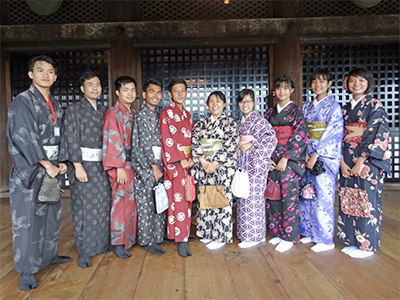
Kimono-wearing experience
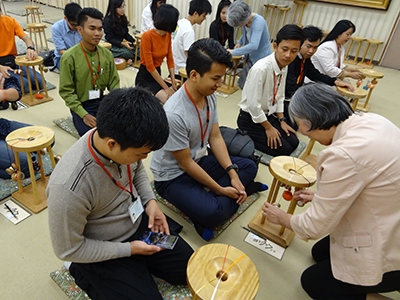
Braided cord-making
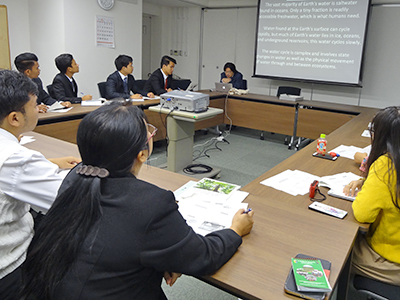
Lecture in English
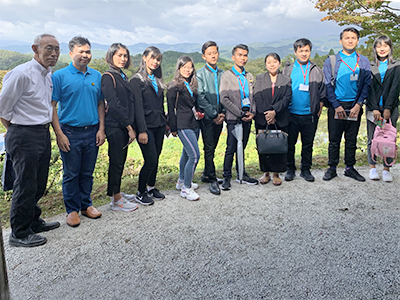
At Rinuntei, a part of the Shugakuin Imperial Villa
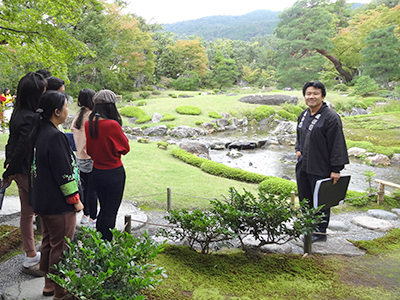
At the Murin-an Japanese garden, listening to guidance by Professor Tomoki Kato of the Kyoto University of Art and Design
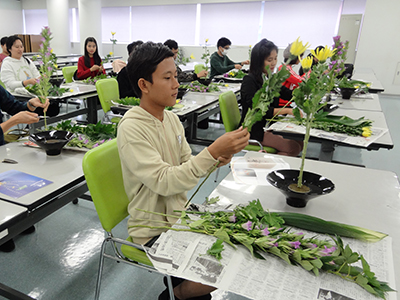
Flower arrangement at Ikenobo Kaikan
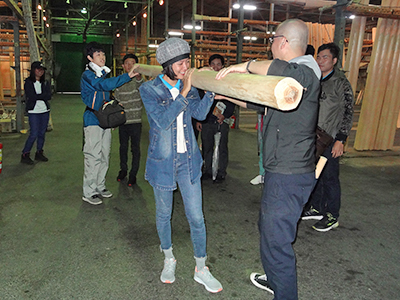
Carrying a log of Kitayama Japanese cedar at the Kyoto Kitayama-Sugi-no-Sato Center

In the Ashiu Experimental Forest
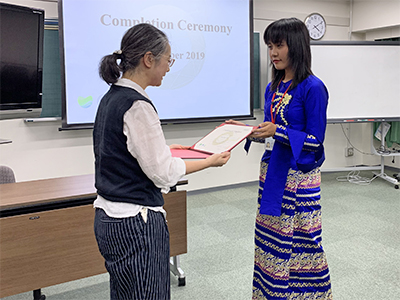
FSERC Director Tokuchi (left) presenting a certificate of completion to a program participant
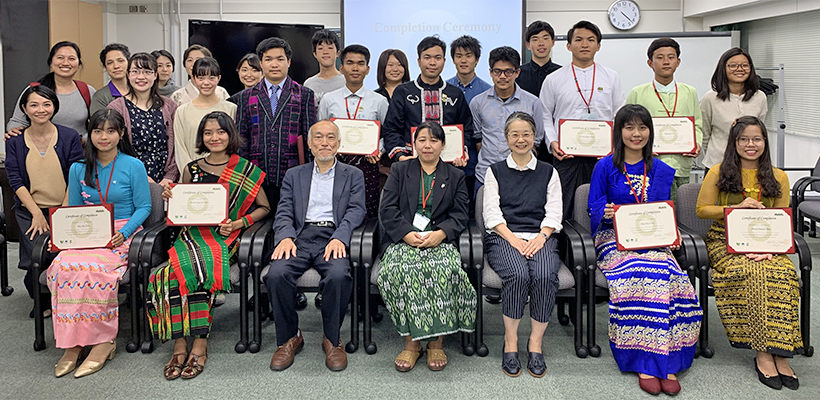
Program participants from UFES and KyotoU at the closing ceremony
Related link
- Wild & Wise Collaborative Learning Programs
https://www.kyoto-u.ac.jp/en/education-campus/education_and_admissions/non-degree-programs/international-education-initiatives/wild_and_wise





